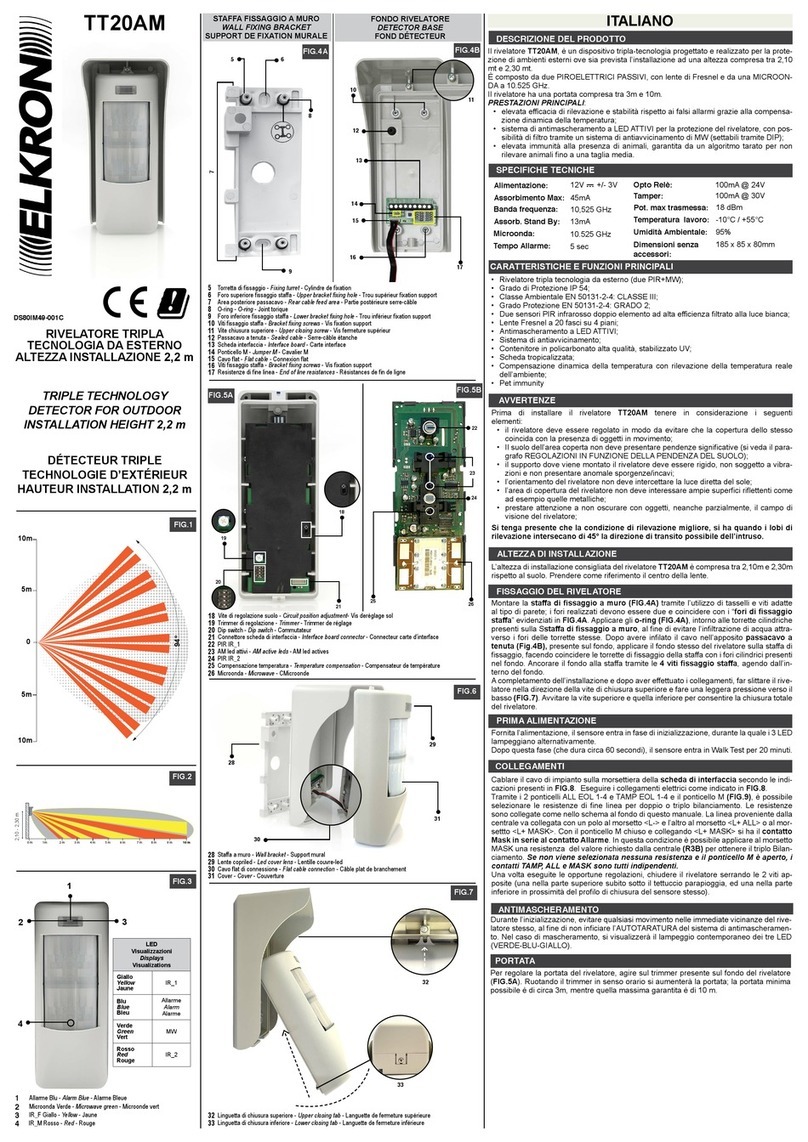Gotting HG G-98820ZB User manual

RFID Localization Sensor
HG G-98820ZB/ZC/YC
Position detection and identification | mounting lengthwise/
crosswise | serial | CAN/PROFINET®
English, Revision 12 Date: 14.12.2023 Dev. by: LF Author(s): RAD / TN / LF
Guide Wire
www.goetting-agv.com
Innovation through Guidance
Device Description HG G-98820ZB/ZC/YC

Device Description HG G-98820ZB/ZC/YC | English, Revision 12 | Date: 14.12.2023
2Overview
Main Features
•RFID localization sensor for automa-
tion applications (s. section 3.4 on
page 13)
•Direction of travel adjustable cross-
wise or lengthwise depending on
application (s. section 3.3 on page
13)
•Indoor & Outdoor, IP 65
•Mounting side may be mounted
directly on metal
•Reading distance depending on the
transponder type in use 20 to
160 mm
•Max. crossing speed depending on
the mounting direction 4 m/s (cross-
wise) respectively 6 m/s (length-
wise)
•Bus interface depending on variant
CAN/CANopen® or PROFINET®
•PosiPulse when crossing the center
axis in driving direction
•Serial interface serves as service
interface for configuration (also for
updating the localization sensor
software) or data interface (configu-
rable telegram contents)
•Programming of transponders
© 2023 Götting KG, errors and modifications reserved.
Götting KG in D-31275 Lehrte has
a certified quality management system
according to ISO 9001.

Device Description HG G-98820ZB/ZC/YC | English, Revision 12 | Date: 14.12.2023
3
Table of Contents
1 About this Document....................................................................................6
1.1 Validity .............................................................................................................................................................6
1.1.1 Target Group............................................................................................................................................6
1.1.2 Other Applicable Documents...........................................................................................................6
1.2 Declaration of Conformity ......................................................................................................................6
1.3 Presentation of Information...................................................................................................................7
1.3.1 Warning Notices.....................................................................................................................................7
1.3.2 Symbols......................................................................................................................................................8
2 Safety Instructions........................................................................................9
2.1 Intended Use.................................................................................................................................................9
2.2 Improper Use................................................................................................................................................9
2.3 User Qualification ....................................................................................................................................10
2.4 General Safety Instructions.................................................................................................................10
2.5 Obligations of the Operator.................................................................................................................11
3 Introduction..................................................................................................12
3.1 Variants.........................................................................................................................................................12
3.2 Functional Description...........................................................................................................................12
3.3 Definitions...................................................................................................................................................13
3.4 Application Examples ............................................................................................................................13
4 Scope of Delivery ........................................................................................15
4.1 Required Accessories ............................................................................................................................15
4.2 Optional Accessories..............................................................................................................................16
5 Storage .........................................................................................................17
6 Mounting.......................................................................................................18
6.1 Mounting the Transponders ...............................................................................................................18
6.1.1 Operating Conditions for Transponders...................................................................................18
6.2 Preparation of Connection Cables ...................................................................................................19
6.2.1 All Variants: Connecting Power....................................................................................................19
6.2.2 Variants HG G-98820ZB/ZC – Connecting the CAN Bus .................................................19
6.2.3 Variant HG G-71915YA – Connecting PROFINET®............................................................20
6.3 All Variants: Mounting the Localization Sensor .........................................................................20
6.3.1 Operating Conditions of the Localization Sensor.................................................................20
6.3.2 Minimum Distance Between Localization Sensor and Transponder..........................21
6.3.3 Minimum Distance Between Identical Localization Sensors .........................................21
6.3.4 Metal-free Areas Around Transponder and Localization Sensor..................................21
6.3.4.1 Smaller Metallic Structures that do not Form a Loop...................................................22
6.3.4.2 Closed Metallic or Electrically Conductive Structures..................................................22
6.3.5 Connection Example.........................................................................................................................23
6.3.6 Mounting the Localization Sensor on the Vehicle ...............................................................23
6.3.7 Localization Sensor Switch-On....................................................................................................24
7 Commissioning ............................................................................................25
7.1 Configuring the Localization Sensor (Service Interface)........................................................25
7.1.1 Set Parameters....................................................................................................................................25
7.1.2 Minimizing Interferences.................................................................................................................26
7.1.2.1 Setting the Positioning Thresholds........................................................................................26
7.1.2.2 Sequence of a Transponder Crossing..................................................................................27
7.2 Complete Commissioning ...................................................................................................................29
8 Interfaces......................................................................................................30
8.1 All Variants: PosiPulse (Positioning Pulse)....................................................................................30
Contents

Device Description HG G-98820ZB/ZC/YC | English, Revision 12 | Date: 14.12.2023
4Table of Contents
8.2 All Variants: Serial (RS 232).................................................................................................................31
8.2.1 List of the system data which can be output.........................................................................31
8.2.2 List of commands ...............................................................................................................................32
8.3 Variants HG G-98820ZB/ZC: CAN ....................................................................................................34
8.3.1 Basic CAN...............................................................................................................................................34
8.3.1.1 Description........................................................................................................................................34
8.3.1.2 CAN Message Object 1 (Transmission Object).................................................................34
8.3.1.3 CAN Message Object 2 (Transmission Object).................................................................35
8.3.1.4 CAN Message Object 3 (Transmission Object).................................................................35
8.3.1.5 CAN Message Object 4 (Reception Object).......................................................................35
8.3.2 CANopen® .............................................................................................................................................36
8.3.2.1 Description of the Process Data Objects (PDO)...............................................................36
8.3.2.2 Heartbeat...........................................................................................................................................37
8.3.2.3 Node Guarding ................................................................................................................................37
8.3.2.4 Description of the Service Data Objects (SDOs)..............................................................37
8.3.2.5 Object Directory..............................................................................................................................38
8.3.2.6 EDS Configuration File ................................................................................................................38
8.4 Variant HG G-98820YC: PROFINET®..............................................................................................38
8.4.1 Input Bytes.............................................................................................................................................38
8.4.2 Output Bytes .........................................................................................................................................39
8.4.3 GSDML File............................................................................................................................................40
9 Software .......................................................................................................41
9.1 Connection to a PC..................................................................................................................................41
9.2 Terminal Program....................................................................................................................................41
9.3 System Monitor.........................................................................................................................................43
9.3.1 How to start the monitor program..............................................................................................43
9.3.1.1 Procedure Monitor only (Default) ...........................................................................................43
9.3.1.2 Procedure transparent.................................................................................................................43
9.3.2 How to work with the monitor program...................................................................................44
9.3.2.1 Main menu........................................................................................................................................44
9.3.2.2 (S)erial Output..................................................................................................................................46
9.3.2.3 (T)ime & Code..................................................................................................................................47
9.3.2.4 (F)requency & Antenna Tuning................................................................................................48
9.3.2.5 Basic C(A)N-Parameters .............................................................................................................49
9.3.2.6 CA(N)-Open-Parameters.............................................................................................................50
9.3.2.7 (D)isplay Systemstatus ................................................................................................................51
9.3.2.8 Cs(v) [Code,Sum,Dif,Y,Status,ReadCnt,ErrCnt](abort with <a>)...............................51
9.3.2.9 (Y) display Histogram....................................................................................................................51
9.3.2.10 (W)rite Transponder......................................................................................................................52
9.3.2.11 [L]oad User parameters to EEProm.......................................................................................52
9.3.2.12 [U]pdate Firmware.........................................................................................................................52
9.3.2.13 P(r)int Parameters..........................................................................................................................53
9.3.2.14 (1) Import User Parameter from Host to Localization Sensor / (2) Ex-
port User Parameter from Localization Sensor to Host................................................53
9.3.2.15 (3) Service Menu.............................................................................................................................53
9.3.2.16 R(e)set .................................................................................................................................................53
10 Maintenance.................................................................................................54
11 Disposal ........................................................................................................55
12 Trouble Shooting.........................................................................................56
13 Technical Data .............................................................................................57
14 Annex ............................................................................................................58
14.1 Procedure „transparent“ .......................................................................................................................58
14.1.1 Data Direction Localization Sensor -> PLC .............................................................................58
14.1.2 Data Direction PLC -> Localization Sensor .............................................................................58

Device Description HG G-98820ZB/ZC/YC | English, Revision 12 | Date: 14.12.2023
5
Table of Contents
14.2 Overview of the CANopen® Directory...........................................................................................58
14.2.1 Communication specific Entries within the Range of 0x1000 to 0x1FFF................58
14.2.2 Manufacturer specific Entries starting at 0x2000 ...............................................................60
14.2.3 Standardized Device Profile higher than 0x6000 ................................................................60
14.3 Details of the CANopen® Directory.................................................................................................61
14.3.1 Device Type...........................................................................................................................................61
14.3.2 Error Register........................................................................................................................................61
14.3.3 COB-ID SYNC message...................................................................................................................61
14.3.4 Device Name.........................................................................................................................................61
14.3.5 Hardware Version...............................................................................................................................61
14.3.6 Software Version ................................................................................................................................61
14.3.7 Save Parameters.................................................................................................................................62
14.3.8 Restore Default Parameter.............................................................................................................62
14.3.9 Producer Heartbeat Time................................................................................................................62
14.3.10 Identity Object......................................................................................................................................63
14.3.11 Transmit PDO_1 Parameter ..........................................................................................................63
14.3.12 Transmit PDO_2 Parameter ..........................................................................................................63
14.3.13 Mapping TPDO_1...............................................................................................................................64
14.3.14 Mapping TPDO_2...............................................................................................................................64
14.3.15 Device Parameter...............................................................................................................................65
14.3.16 Codes for System Configuration..................................................................................................66
14.3.17 Manufacture Parameter - Node Parameter............................................................................66
14.3.18 8 Bit Digital Input (transmission in TPDO_2) .........................................................................67
14.3.19 16 Bit Status (transmission in TPDO_1)...................................................................................67
14.3.20 32 Bit Transponder Code................................................................................................................67
14.3.21 8 Bit Analog Inputs.............................................................................................................................67
14.3.22 16 Bit Analog Inputs..........................................................................................................................68
14.4 Accuracy of the deviation calculation ............................................................................................68
14.5 Mechanical Drawing with Localization Sensor Dimensions................................................69
15 Document Changelog.................................................................................70
16 List of Figures ..............................................................................................71
17 List of Tables................................................................................................72
18 Index..............................................................................................................74
19 Copyright and Terms of Liability...............................................................76
19.1 Copyright ..................................................................................................................................................... 76
19.2 Exclusion of Liability...............................................................................................................................76
19.3 Trade Marks and Company Names.................................................................................................76

Device Description HG G-98820ZB/ZC/YC | English, Revision 12 | Date: 14.12.2023
6Chapter 1 – About this Document
1.1 Validity
This device description applies to the RFID localization sensor HG G-98820ZB/ZC/
YC. It contains information on correct mounting, electrical installation, commission-
ing, operation, maintenance and fault rectification.
This device description refers to devices – depending on the variant – with firmware
98820YC_1.00 / 98820ZC_1.00 / 98820ZB_1.05 or higher (visible in the main menu
as shown in Figure 17 on page 44).
1.1.1 Target Group
This device description is intended for developers, manufacturers or operators of
systems or facilities that want to track guide Automated Guided Vehicles (AGV). It is
also intended for qualified personnel who
wants to integrate the localization sensor into a vehicle.
wants to carry out the initial commissioning of the system.
want to configure the system.
1.1.2 Other Applicable Documents
This device description does not include information on the operation of the higher-
level system, e.g. an automated guided vehicle (AGV), into which the evaluator is in-
tegrated.
Do not put the RFID localization sensor into operation until you have received
the operating instructions from the manufacturer or the system operator and
have read and understood them.
1.2 Declaration of Conformity
The product HG G-98820ZB/ZC/YC complies with the relevant harmonisation legis-
lation of the European Union. The relevant harmonized European standards and di-
rectives mentioned in the Declaration of Conformity were used to assess conformity.
About this Document
Supplementary documents for devices from Götting are available
on request or directly via our Internet pages. The adjacent QR
code will lead you to our homepage www.goetting-agv.com. The
following links refer to specific product pages.
–Disc Transponder HW DEV00095/HW DEV00098
https://www.goetting-agv.com/components/00095
–Glass Transponder HG G-70633
https://www.goetting-agv.com/components/70633
–Puck Transponder HG G-70652/HG G-70653
https://www.goetting-agv.com/components/70652
https://www.goetting-agv.com/components/70653
–Rod Transponder HG G-71325
https://www.goetting-agv.com/components/71325
1

Device Description HG G-98820ZB/ZC/YC | English, Revision 12 | Date: 14.12.2023
7
About this Document – Chapter 1
You can request the EU declaration of conformity from Götting KG
or download it from the following address:
1.3 Presentation of Information
For you to be able to use your product simply and safely this device description uses
consistent warning notices, symbols, terms and abbreviations. Those are described
in the following sections.
1.3.1 Warning Notices
In this device description warning notices appear before sequences of actions that
may lead to damage to persons or property. The listed actions for the danger preven-
tion have to be observed.
Warning notices have the following structure:
The warning symbol (warning triangle) indicates danger to life or risk of injury.
The signal word indicates the severity of the danger.
The paragraph kind or source of the danger names the kind or source of the
danger.
The paragraph consequences describes the consequences of not observing
the warning notice.
The paragraphs for danger prevention explain, how to avoid the danger.
The signal words have the following meanings:
https://www.goetting-agv.com/components/98820
SIGNAL WORD
Kind or source of the danger
Consequences
Danger prevention
Table 1 Hazard classification according to ANSI Z535.6-2006
Warning Symbol, Signal Word Meaning
DANGER
DANGER indicates a hazardous situation
which, if not avoided, will result in death or
serious injury.
WARNING
WARNING indicates a hazardous situation
which, if not avoided, could result in death or
serious injury.
CAUTION
CAUTION indicates a hazardous situation
which, if not avoided, could result in minor or
moderate injury.
NOTICE
NOTICE indicates property damage: The
product or the environment could be dam-
aged.

Device Description HG G-98820ZB/ZC/YC | English, Revision 12 | Date: 14.12.2023
8Chapter 1 – About this Document
1.3.2 Symbols
In this device description the following symbols and formatting are used:
The check mark lists a requirement.
The arrow shows an action step.
The indentation shows the result of an action or an action sequence.
Program texts and variables are indicated through the use of a fixed width
font.
Menu items and parameters are shown in cursive characters.
Whenever the pressing of letter keys is required for program entries, the
required etter eys are indicated as such (for any programs of Götting KG
small and capital letters are equally working).
If this information is ignored the product may not be operated in an optimal way.
Indicates one or more links to the Internet.
–www.goetting.de/xxx
–www.goetting.de/yyy
Indicates tips for easier operation of the product.

Device Description HG G-98820ZB/ZC/YC | English, Revision 12 | Date: 14.12.2023
9
Safety Instructions – Chapter 2
Our product has been designed and manufactured in accordance with the generally
recognized rules of technology. Nevertheless, there is a risk of personal injury and
damage to property if you do not observe this chapter and the safety instructions in
this documentation.
Read this documentation thoroughly and completely before working with the
product.
Ensure that the documentation is kept in such a way that it is accessible to all
users at all times.
Always pass the product on to third-parties together with the relevant
documentation.
2.1 Intended Use
The localization sensor HG G-98820ZB/ZC/YC is designed to calculate the relative
position of matching RFID tags (transponders) and to output it to a higher-level con-
trol system. Either the transponders or the localization sensor must be in a fixed po-
sition. Possible fields of application are listed in section 3.4 „Application Examples“
on page 13.
The localization sensor HG G-98820ZB/ZC/YC may only be used by qualified person-
nel at the place of installation (e.g. vehicle) where it has been installed and commis-
sioned for the first time by qualified personnel in accordance with these operating
instructions. The operating conditions specified in this device description must be
observed.
The localization sensor HG G-98820ZB/ZC/YC does not contain any safety equip-
ment and may therefore only be used in applications where the manufacturer or the
system operator has ensured that sufficient measures are implemented for the pro-
tection of persons and the safe detection of obstacles.
2.2 Improper Use
Any use other than that described in the intended use is not in accordance with the
intended use and is therefore not permitted.
Götting accepts no liability for damage resulting from improper use. The risks asso-
ciated with improper use lie solely with the user.
The improper use of the product includes:
The use of the localization sensor in vehicles that are not equipped with safety
devices for the protection of persons and the safe detection of obstacles.
Leaving the track or the appearance of a person or an obstacle in the danger
area must be safely detected at all times and immediate stopping of moving
parts (e.g. vehicles) must be ensured in order to exclude damage to property or
personal injury.
Safety Instructions
2

Device Description HG G-98820ZB/ZC/YC | English, Revision 12 | Date: 14.12.2023
10 Chapter 2 – Safety Instructions
2.3 User Qualification
The operations described in this document require basic knowledge of mechanics
and electrics as well as knowledge of the associated technical terms. To ensure safe
use, these activities may therefore only be performed by an appropriate specialist or
an instructed person under the direction of a specialist.
A specialist is someone who, on the basis of his technical training, knowledge and
experience as well as his knowledge of the relevant regulations, is able to assess the
work assigned to him, recognize possible hazards and take suitable safety measures.
A specialist must comply with the relevant technical rules.
The personnel designated for the assembly, commissioning and configuration of the
localization sensor
has received this device description.
is familiar with the operation of the higher-level system (e.g. a vehicle).
is competent to perform his activities and is sufficiently trained in the installa-
tion and configuration of the localization sensor, if this is part of their activities.
is – in case the CAN bus interface is to be used – familiar with the commission-
ing of and telegram exchange via CAN bus connections.
is – in case the PROFINET® interface is to be used – familiar with the commis-
sioning of and telegram exchange via PROFINET® connections.
knows – in the event that the localization sensor is to be used for position
detection of automated vehicles – the dangers emanating from an automated
guided vehicle (AGV) and has been sufficiently instructed in the handling of the
vehicle and any necessary safety precautions to assess the safe working condi-
tion of the system.
knows – in case other devices or systems with moving parts are used – the risks
arising from the application and is sufficiently instructed in the safety precau-
tions that may be necessary to assess the safe working condition of the system.
2.4 General Safety Instructions
Ensure that the localization sensor HG G-98820ZB/ZC/YC is used only in appli-
cations,
–where sufficient measures for personal protection and safe detection of
obstacles are implemented and
–where it is reliably detected if the vehicle leaves the track or a person or
obstacle appear in the danger zone at any time and all moving parts (e.g.
vehicles) are immediately stopped.
Ensure that interference does not impair the detection of transponders. Strate-
gies for detecting and avoiding interference can be found in chapter 7 on page
25.
Mount the localization sensor so firmly on the vehicle that its position cannot
change during normal operation. Otherwise, the position data will be incorrectly
evaluated by the higher-level system and the vehicle may drive off track.
Although dirt does not affect the position detection itself, the localization sensor
should be protected from dirt and moisture (e.g. splash water from the wheels
of the vehicle) and cleaned regularly, otherwise wear and tear on the localiza-
tion sensor will increase.

Device Description HG G-98820ZB/ZC/YC | English, Revision 12 | Date: 14.12.2023
11
Safety Instructions – Chapter 2
2.5 Obligations of the Operator
When using the localization sensor, the operator must ensure that
all persons within the area of influence of an automated system (e.g. automated
guided vehicle (AGV)) are informed about the type of application and the associ-
ated hazards,
the operating conditions specified in this device description are observed,
the localization sensor is in a technically perfect condition.
The operator must not modify or alter the localization sensor without authorization.
Otherwise, the operating permit will become invalid.

Device Description HG G-98820ZB/ZC/YC | English, Revision 12 | Date: 14.12.2023
12 Chapter 3 – Introduction
3.1 Variants
The RFID localization sensor is available in three variants.
3.2 Functional Description
The RFID localization sensor HG G-98820ZB/ZC/YC exclusively measures the posi-
tion of a passive RFID tag (transponder) relative to the center of the sensor along the
Y-axis. Depending on the application (see table below), the sensor is mounted cross-
wise or lengthwise to the direction of travel; the mounting direction can be config-
ured in the sensor software. The sensor and transponder are largely insensitive to
dirt and moisture and can also be used in harsh environments.
As long as a transponder is in the reading range of the sensor, the relative position
information of the transponder is continuously output. Its code is also output so that
it can be identified. If the absolute position of the identified transponder is known,
the absolute position of the sensor can be calculated from the relative measure-
ment. When crossing the center axis in the direction of travel (see illustration below),
a high-precision positioning pulse (PosiPulse) is also output.
Introduction
Table 2 Varianten-Übersicht
Bestell-Nr. Ausstattung
HG G-98820
ZB Bus interface: CAN Basic / CAN Extended / CANopen®
ZC –Bus interface: CAN Basic / CAN Extended / CANopen®
–Stainless steel connectors
YC –Bus interface: PROFINET®
–Stainless steel connectors
3

Device Description HG G-98820ZB/ZC/YC | English, Revision 12 | Date: 14.12.2023
13
Introduction – Chapter 3
3.3 Definitions
The signs and coordinate definitions of the localization sensor specified in this de-
vice description are defined according to the following figure:
Figure 1 Definitions / coordinate system / mounting direction
3.4 Application Examples
Figure 2 Examples of AGVs using RFID systems
Localization of AGV
In these applications, the sensor is installed crosswise to the direction of travel.
The PosiPulse is triggered when the long center axis (Y-axis) is crossed.
To navigate AGVs, the current position of the AGV is determined by the lateral
deviation at the location of the transponder. If the sensor crosses the transpon-
der with its long center axis, the PosiPulse is triggered and a two-dimensional
position is available at this point. The field of the transponder is rotationally
symmetrical, which is why no orientation/direction of travel can be measured.
Orientation/direction of travel can be calculated using dead reckoning between
transponders from the results of at least two measurements on different tran-
sponders.
*) Depending on the application (s. section 3.4 on page 13), the localization sensor
can be operated crosswise or lengthwise. The mounting direction can be config-
ured in the sensor software, see parameter Direction in section 9.3.2.3 on page
47.
Reading side
Reading area 250 x 110 mm (bit TRANS_IN_FIELD set) Mounting direction *)
Crosswise (default)
Lengthwise
PosiPulse
PosiPulse
Direction of travel
Area –X (bit SEGMENT– set)
–Y
Output of the relative deviation from the center in mm
+YY=0
Y-axis
X-axis
±125 mm
+X
Bit=0
–X
Bit=1 SEGMENT–

Device Description HG G-98820ZB/ZC/YC | English, Revision 12 | Date: 14.12.2023
14 Chapter 3 – Introduction
Localization of rail vehicles (ASC, RMG)
In these applications, the sensor is installed lengthwise to the direction of
travel. The PosiPulse is triggered when the short center axis (X-axis) is crossed.
For rail vehicles, the position along the rail is to be determined. If the transpon-
der is in the active area of the sensor, the longitudinal position of the transpon-
der is measured along the long axis relative to the center of the sensor. If the
absolute position of the transponder is known, the absolute position of the rail
vehicle can be determined from this. When the sensor crosses the transponder
with its short central axis, the PosiPulse is triggered, which in addition to the
continuous measured value represents the measured value zero in the longitu-
dinal position with high precision.
Contact-free measurement of the displacement of workpieces
Due to the high reproducible measuring accuracy and measuring rate, contact-
free length measurements can be carried out between moving or displaceable
workpieces lengthwise to the direction of movement.

Device Description HG G-98820ZB/ZC/YC | English, Revision 12 | Date: 14.12.2023
15
Scope of Delivery – Chapter 4
The scope of supply includes:
one RFID localization sensor HG G-98820ZB/ZC/YC
this device description, available in electronic form at the following address:
4.1 Required Accessories
The localization sensor alone is not sufficient for position detection of vehicles with
transponders. In order to operate a driverless transport system you also need:
connection cables for connecting the localization sensor to the vehicle electron-
ics,
several transponders in the ground.
Refer to Table 3 for the order numbers of the required accessories.
Scope of Delivery
www.goetting-agv.com/components/98820
The connection cables can be assembled by the customer (see section 6.2 on
page 19) or ordered from Götting (see below).
Table 3 Required accessories / Transponder reading distances (part 1 of 2)
Order No. Description
HW CAB00001 Power: cable PUR, 5 m with M12 elbow socket, 5-pol., A-
coded
HW CON00055 CAN 1: CAN terminating resistor (Terminator), M12 Plug 5-
pol., A-coded
HW CAB00064 CAN 2: cable CAN-Bus, 10 m, with shielding, M12 socket 5-
pol. straight, A-coded, open end
–HW DEV00095
–HW DEV00098
pre-programmed
Disc Transponder
Usually mounted on the roadway
Reading distance: 20 – 50 mm
HG G-70633ZB Glass Transponder
Usually mounted in the ground
Reading distance: 50 – 120 mm
4

Device Description HG G-98820ZB/ZC/YC | English, Revision 12 | Date: 14.12.2023
16 Chapter 4 – Scope of Delivery
4.2 Optional Accessories
Refer to Table 4 for the order numbers of the optional accessories.
HG G-70652ZC Puck Transponder
Usually mounted on the roadway
Reading distance: 50 – 160 mm
HG G-70653ZA Puck Transponder
Usually mounted on the roadway
Reading distance: 50 – 160 mm
HG G-71325XA Rod Transponder
Usually mounted in the ground
Reading distance: 20 – 80 mm
Table 4 Optional accessories
Order No. Description
HG G-06150-A Serial/parallel Interface
converts a serial RS232 data stream into a parallel output.
https://www.goetting-agv.com/components/06150
HG G-73650ZD Navigation controller (control unit)
for calculating the courses of the vehicle
https://www.goetting-agv.com/components/73650
HG G-81840ZA Transponder programming device
for reading and programming of transponder codes
https://www.goetting-agv.com/components/81840
The transponders can also be programmed via the local-
ization sensor, but this is more complicated when
installed, as it usually requires driving the vehicle over
the transponder to be programmed.
Table 3 Required accessories / Transponder reading distances (part 2 of 2)
Order No. Description

Device Description HG G-98820ZB/ZC/YC | English, Revision 12 | Date: 14.12.2023
17
Storage – Chapter 5
The storage temperature is -25 °C to +50 °C.
Store the device in closed rooms only.
Make sure that the storage room is sufficiently ventilated and dry.
Protect the device from damage caused by dirt, dust or moisture.
Storage
NOTICE
Danger due to improper storage
The device can be damaged
Observe the storage conditions.
5

Device Description HG G-98820ZB/ZC/YC | English, Revision 12 | Date: 14.12.2023
18 Chapter 6 – Mounting
We recommend the following procedure for mounting the localization sensor:
First prepare the connection cables (see section 6.2 on page 19).
Lay the connection cables in the vehicle.
Then mount the localization sensor at the desired position (see section 6.3 on
page 20).
Close unused connectors with closing caps.
6.1 Mounting the Transponders
6.1.1 Operating Conditions for Transponders
For all transponders, the maximum reading distance can be achieved if they are po-
sitioned away from metallic surfaces. Practical tests should be carried out to clarify
the configuration!
Mounting options for the transponders:
On the road surface.
Flush in the roadway with grouting.
Transponders may not be permanently mounted in standing water. The plastic can
absorb water over a longer period of time and weaken the transponder signal.
Reinforcements laid tightly under the road surface can interfere not only with the
transponders but also with the localization sensor and thus falsify the position de-
tection. The influence on positioning accuracy and range depends on the size and
distance of metal parts.
Observe the minimum distances specified in the associated data sheets (see
section 1.1.2 on page 6).
Observe the recommended minimum distances in the metal-free space
(section 6.3.4.2 on page 22). The influence on the position accuracy and range
also depends on the size and distance of the metal parts.
A minimum clearance of 240 mm is required between two transponders.
Mounting
NOTICE
Malfunction or detuning of the localization sensor
If you do not comply with the operating conditions, the position detection may be
faulty or the RFID localization sensor may fail completely.
Always comply with the operating conditions specified in section 6.3 on page
20, in particular regarding metal-free areas and the routing of live cables
around the localization sensor.
The reading distance is the distance between the reading side of the localization
sensor and the top edge of the transponder.
6

Device Description HG G-98820ZB/ZC/YC | English, Revision 12 | Date: 14.12.2023
19
Mounting – Chapter 6
Only one transponder may be in the reading range of the localization sensor at
any time.
Mount the transponders as horizontally (disc transponders) or vertically (rod
transponders) as possible.
6.2 Preparation of Connection Cables
The localization sensor has three connectors, these differ depending on the variant.
The pin assignments can be found in the tables below.
6.2.1 All Variants: Connecting Power
Voltage Supply, Serial Interface and Positioning Pulse. 5-pin M12 connector male.
The positioning pulse output is fed from +Ub and limited to 20 mA.
6.2.2 Variants HG G-98820ZB/ZC – Connecting the CAN Bus
The CAN bus is connected to the device with two 5-pin M12 connectors male/fe-
male. They are named CAN1 and CAN2 and are allocated as follows:
Connection cables are not part of the scope of delivery. Suitable cable types for
some of the connectors are available from Götting (see 4.1 on page 15). Compati-
ble cables are also available from many manufacturers. Cables must be used that
are suitable in terms of impedance and have a shield.
NOTICE
Risk of damage to the device or other devices on the CAN bus
The PWR and CAN2 connectors are mechanically identical. There is therefore a
risk of interchanging the associated connectors.
When using variants of the localization sensor with a CAN interface pay
special attention to the correct placement of the PWR and CAN2 connectors.
Table 5 Power Interface
Power Pin Signal Annotation
1 +Ub Power supply
2 Posi Positioning pulse output
20 mA current limited
3 TxD RS232 data output
4 RxD RS232 data input
5 GND Ground (supply)
NOTICE
Damage to the RFID localization sensor or other devices on the CAN bus
If the voltage on the bus lines is too high, the bus driver in the localization sensor
and possibly even other devices connected to the bus may be damaged.
Pin 4 or 5 must not be connected to voltages > 24 V!
M12 5-pin male

Device Description HG G-98820ZB/ZC/YC | English, Revision 12 | Date: 14.12.2023
20 Chapter 6 – Mounting
If the localization sensor is connected at the end of the bus:
Install a CAN terminator.
6.2.3 Variant HG G-71915YA – Connecting PROFINET®
PROFINET® is connected to the localization sensor via the two connectors Bus 1
and Bus 2. Bus 1 and Bus 2 are connected internally via a switch, they therefore have
an identical pin assignment.
6.3 All Variants: Mounting the Localization Sensor
6.3.1 Operating Conditions of the Localization Sensor
The RFID localization sensor HG G-98820ZB/ZC/YC is approved for indoor and out-
door use. It may be used in a temperature range from -25 to +50° C.
The localization sensor must be mounted firmly on the vehicle so that its position
cannot change during normal operation. Otherwise, the position data will be incor-
rectly evaluated by the higher-level system and the vehicle may e.g. drive off-track.
No interference signals from clocked motors etc. may be present in the frequency
range 64 ±4 kHz. This also includes interference frequencies that lie on the metal
body of the vehicle.
Eliminate any interfering signals that may be present.
Table 6 Pin allocations CAN1 and CAN2
CAN1 CAN2 Pin Signal
1 not used
2 +Ub
3 Ground supply
4 CAN_H
5 CAN_L
The connectors of the inputs CAN1/CAN2 are connected in parallel, i.e. there is no
input or output.
These terminators can be obtained from various manufacturers and are available
in versions for many sockets and connectors. A terminator for the connector CAN
1 is also offered by Götting (see section 4.1 on page 15).
Table 7 PROFINET®: Pin assignments Bus 1 & Bus 2
Bus 1 & Bus 2 Pin Signal
1 TX+
2 RX+
3 TX-
4 RX-
M12 5-pin female M12 5-pin male
1
2
3
4
M12, 4-Pin,
D coded, female
This manual suits for next models
2
Table of contents
Popular Security Sensor manuals by other brands
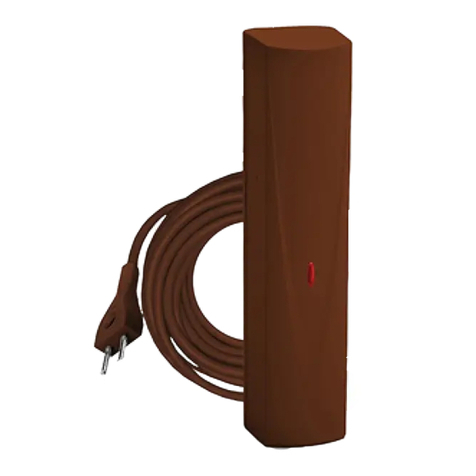
Satel
Satel micra MXD-300 manual
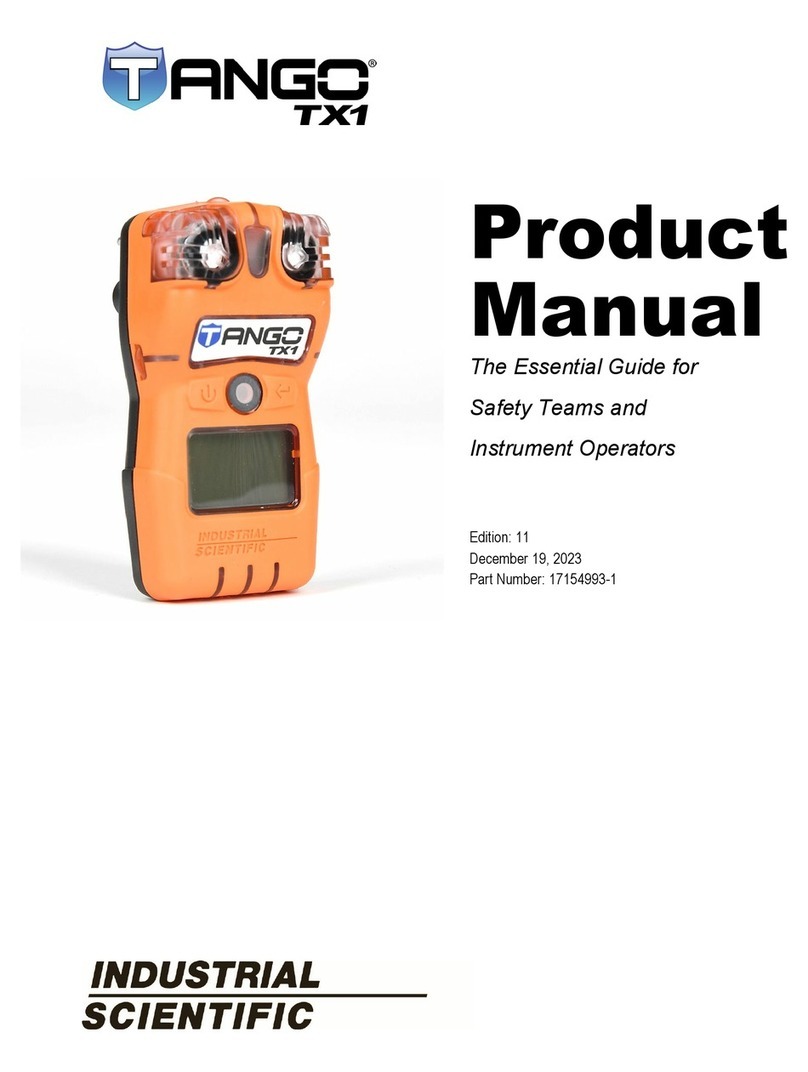
TanGO
TanGO TX1 product manual
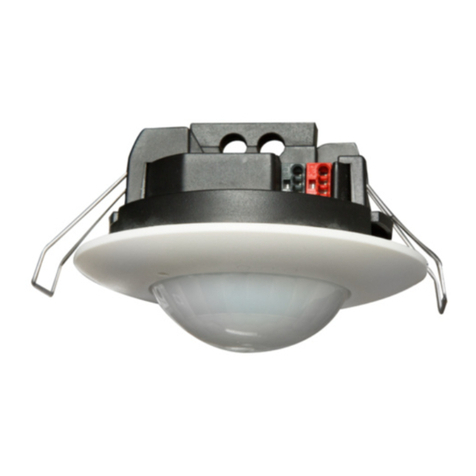
B.E.G. LUXOMAT
B.E.G. LUXOMAT PD2N-KNX-ST-FT Mounting instructions

North American Rescue
North American Rescue Talon 60-0027 Instrcutions for use
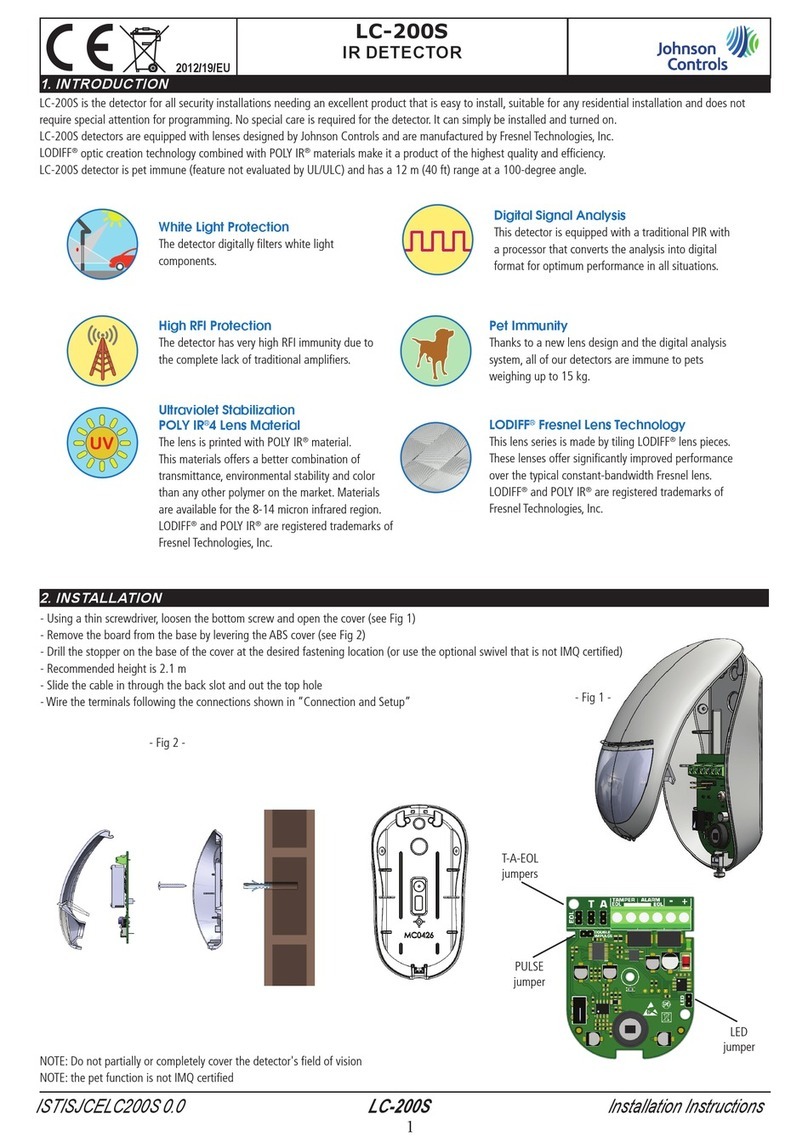
Johnson Controls
Johnson Controls LC-200S installation instructions

RLE Technologies
RLE Technologies Falcon quick start guide
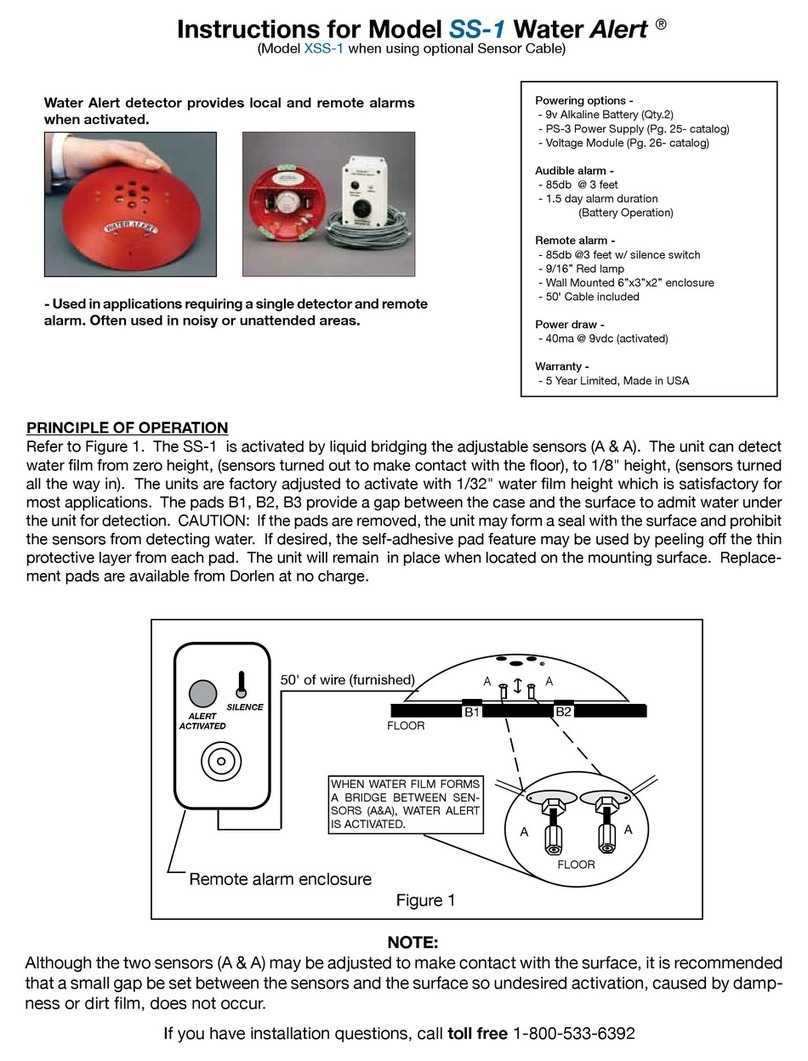
Dorlen
Dorlen Water Alert SS-1 instructions

Topaz
Topaz ESC/LED/RW-NYC installation instructions
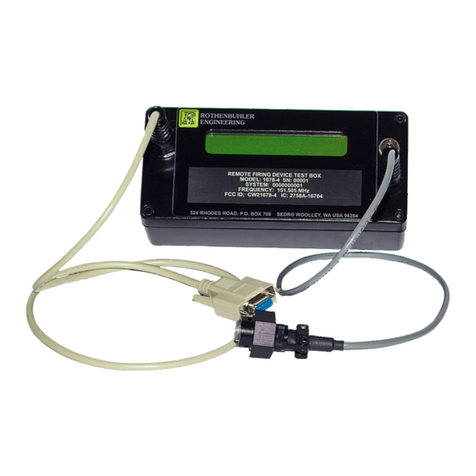
Rothenbuhler Engineering
Rothenbuhler Engineering 1678 REMOTE FIRING DEVICE Operation manual

FORTEZA
FORTEZA FM-30(24)-C-BT user manual
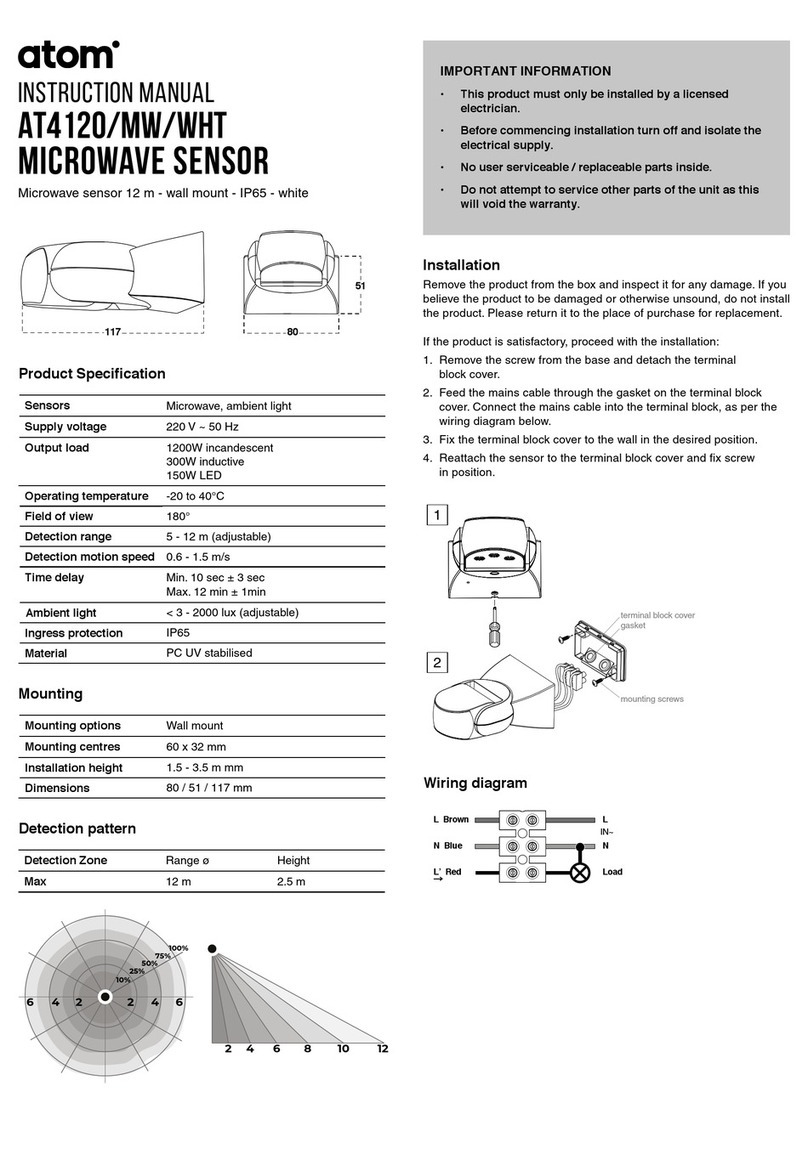
Atom
Atom AT4120/MW/WHT instruction manual
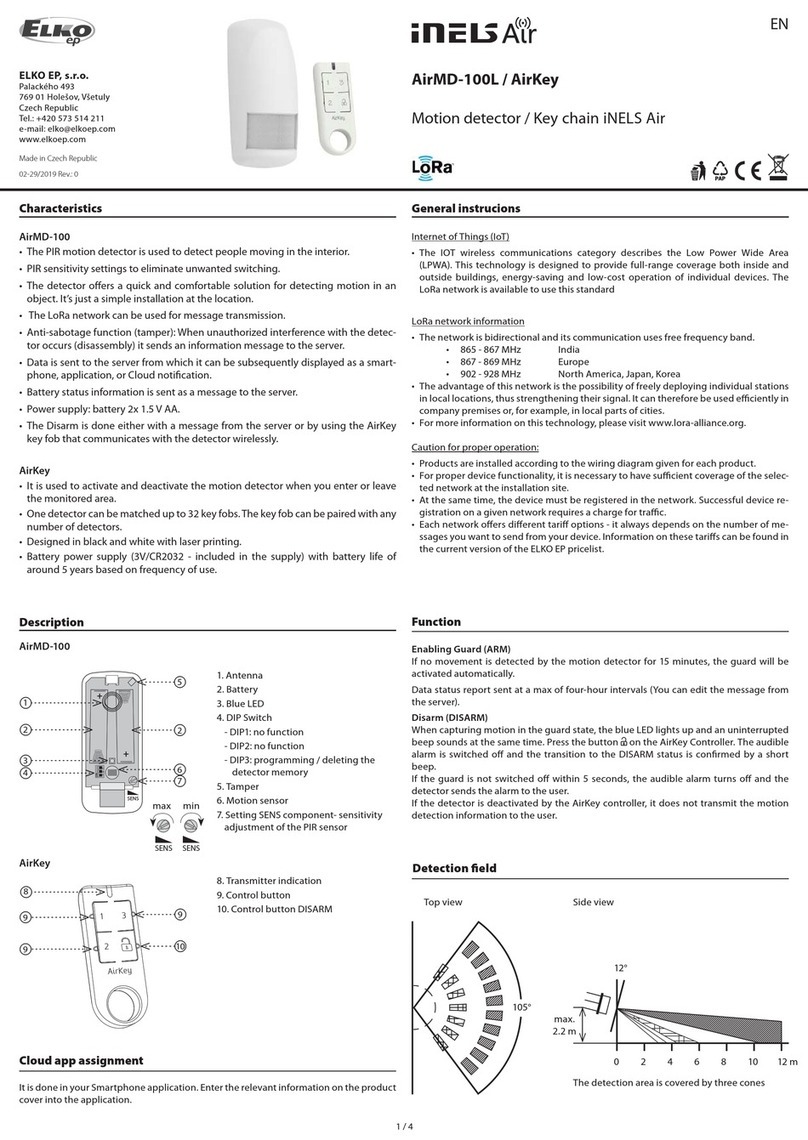
Elko
Elko inelsAir AirMD-100L quick start guide



